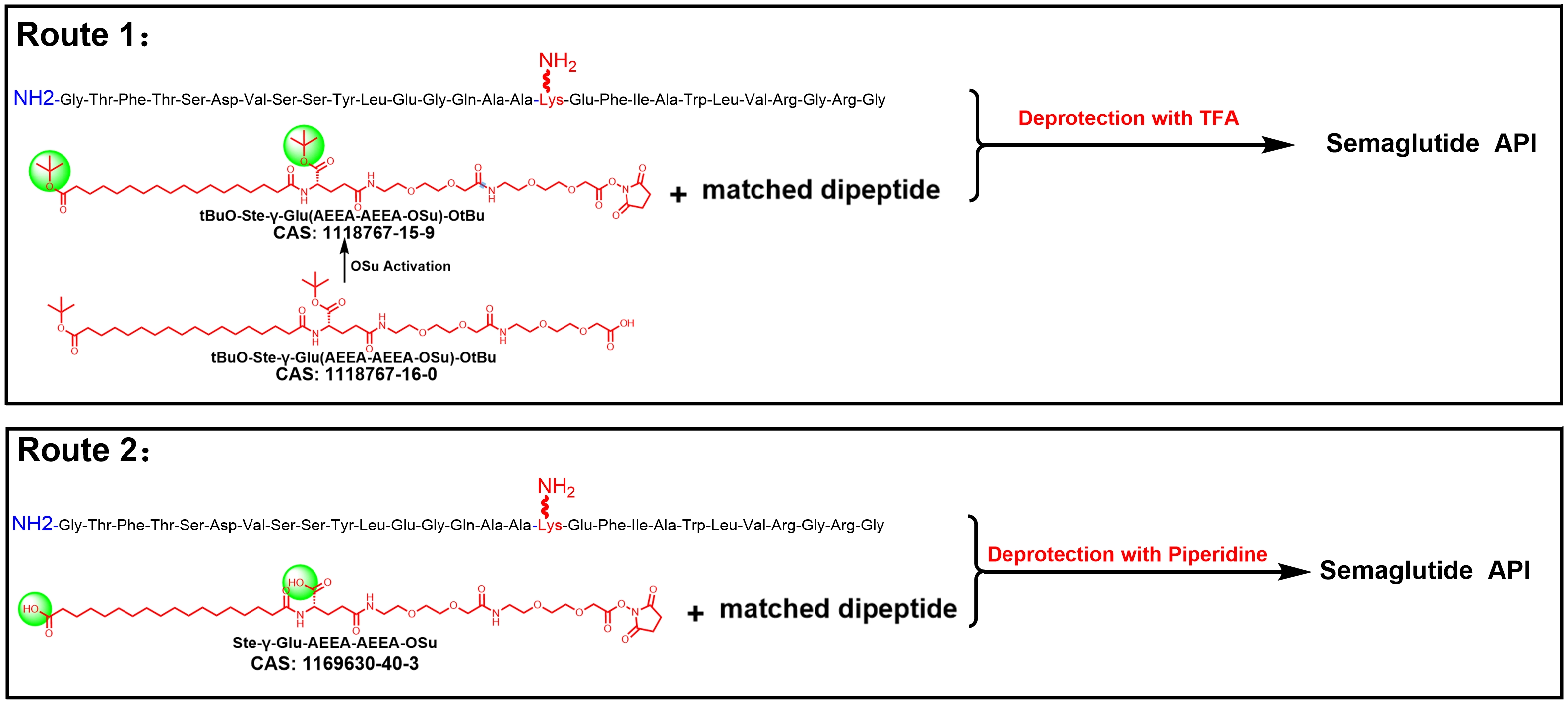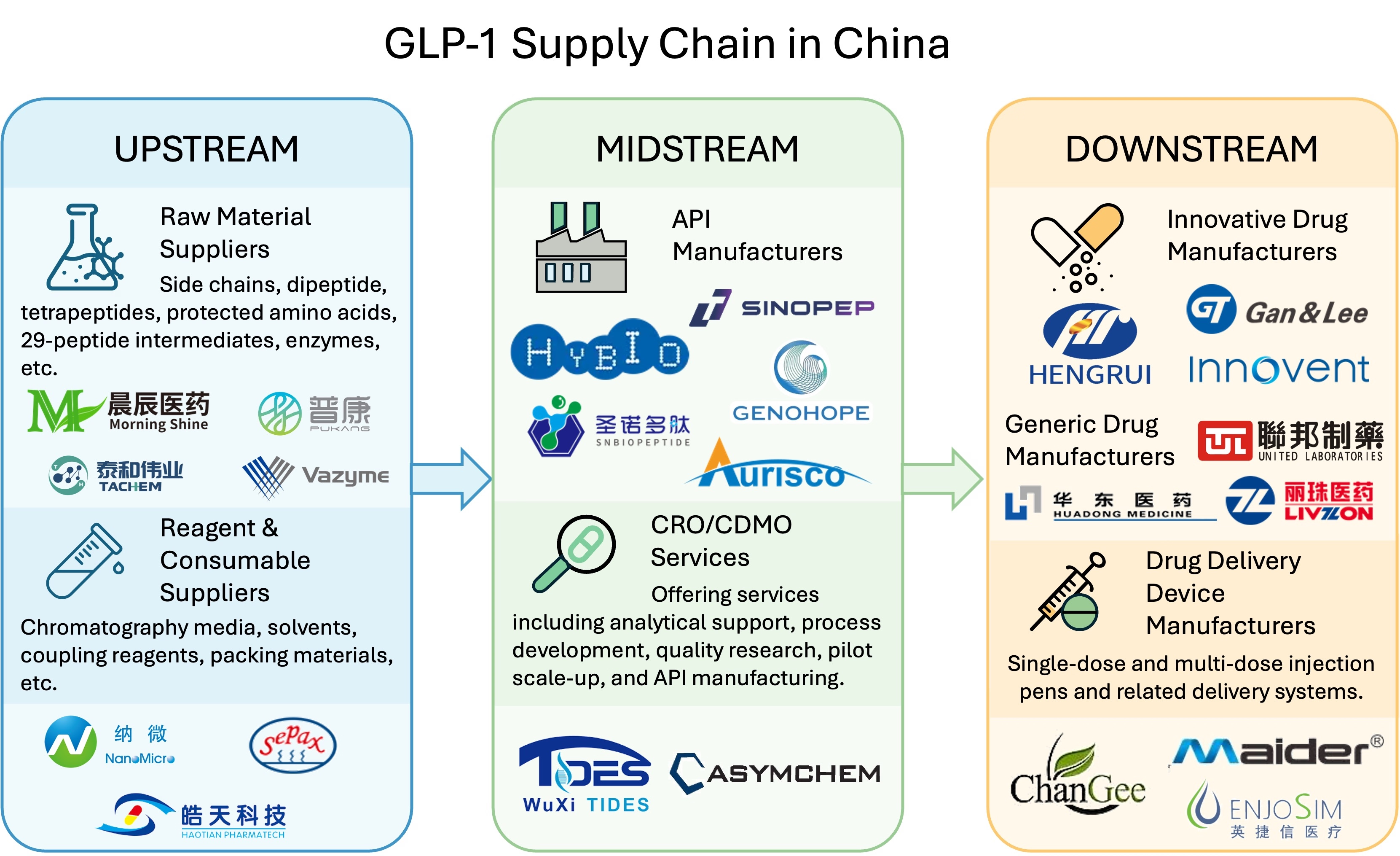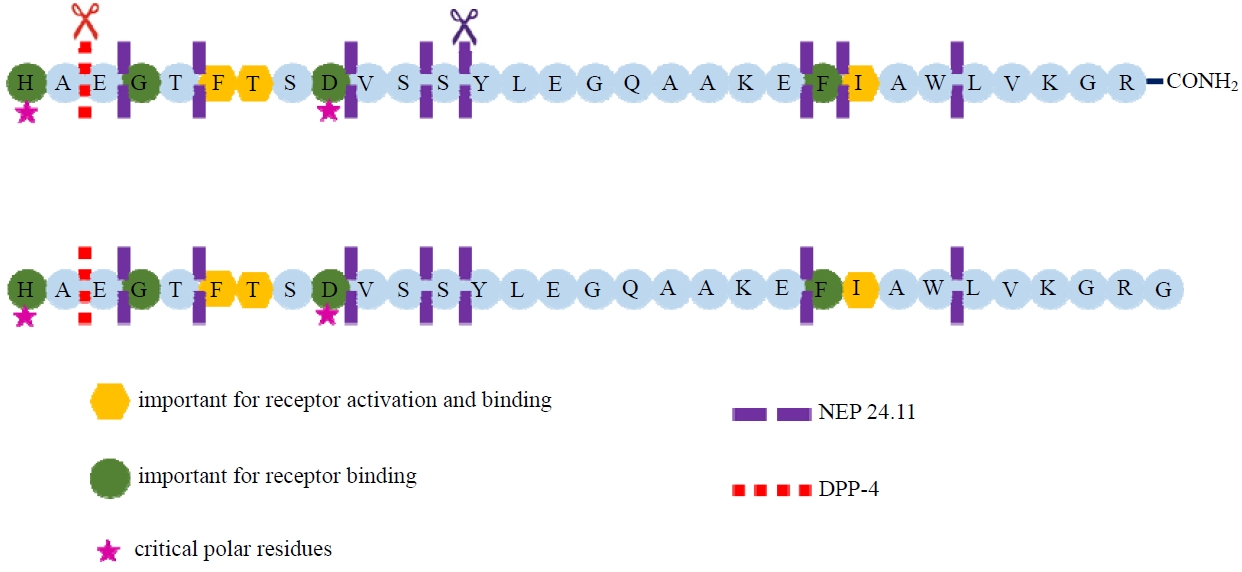chenkaijie@csmspharm.com

Compared to full solid-phase synthesis, the semi-synthetic route of semaglutide based on the recombinant 29-peptide intermediate (P29) offers significant cost advantages. P29 can be efficiently produced via fermentation, with a well-established supply chain in China. Several manufacturers have already filed or are preparing DMF submissions, ensuring regulatory compliance for its use as an intermediate.

As GLP-1-based drugs like semaglutide and tirzepatide reshape diabetes and obesity treatment worldwide, China has rapidly built a robust and complete peptide drug supply chain.

Forced degradation testing (FDT), as part of drug stability studies and drug development, helps reveal a drug's stability characteristics and potential degradation pathways. It is of critical importance for analytical method development and validation, establishment of quality standards, and formulation design based on the QbD (Quality by Design) paradigm, providing valuable support for determining a drug's formulation, manufacturing process, packaging, and storage conditions...

GLP-1 (glucagon-like peptide-1), a critical glucose-regulating peptide, has limited clinical utility due to its native half-life of merely 2-3 minutes. The development of long-acting GLP-1 receptor agonists (GLP-1RAs) focuses on two core objectives: enzymatic resistance and clearance reduction. Key strategies include: Amino acid modification at position 8; Renal clearance retardation; Sustained-release formulations. This review systematically analyzes these half-life extension strategies for GLP-1-based therapeutics.

In the production of active pharmaceutical ingredients (APIs) or excipients, enzymes/proteins used or generated during the process lack therapeutic benefits and pose potential risks to human health (such as anaphylactic shock due to allergies). Therefore, all residues should be eliminated as thoroughly as possible. Consequently, controlling enzyme/protein residues in drugs represents a critical research component to ensure the safety of marketed pharmaceutical products.